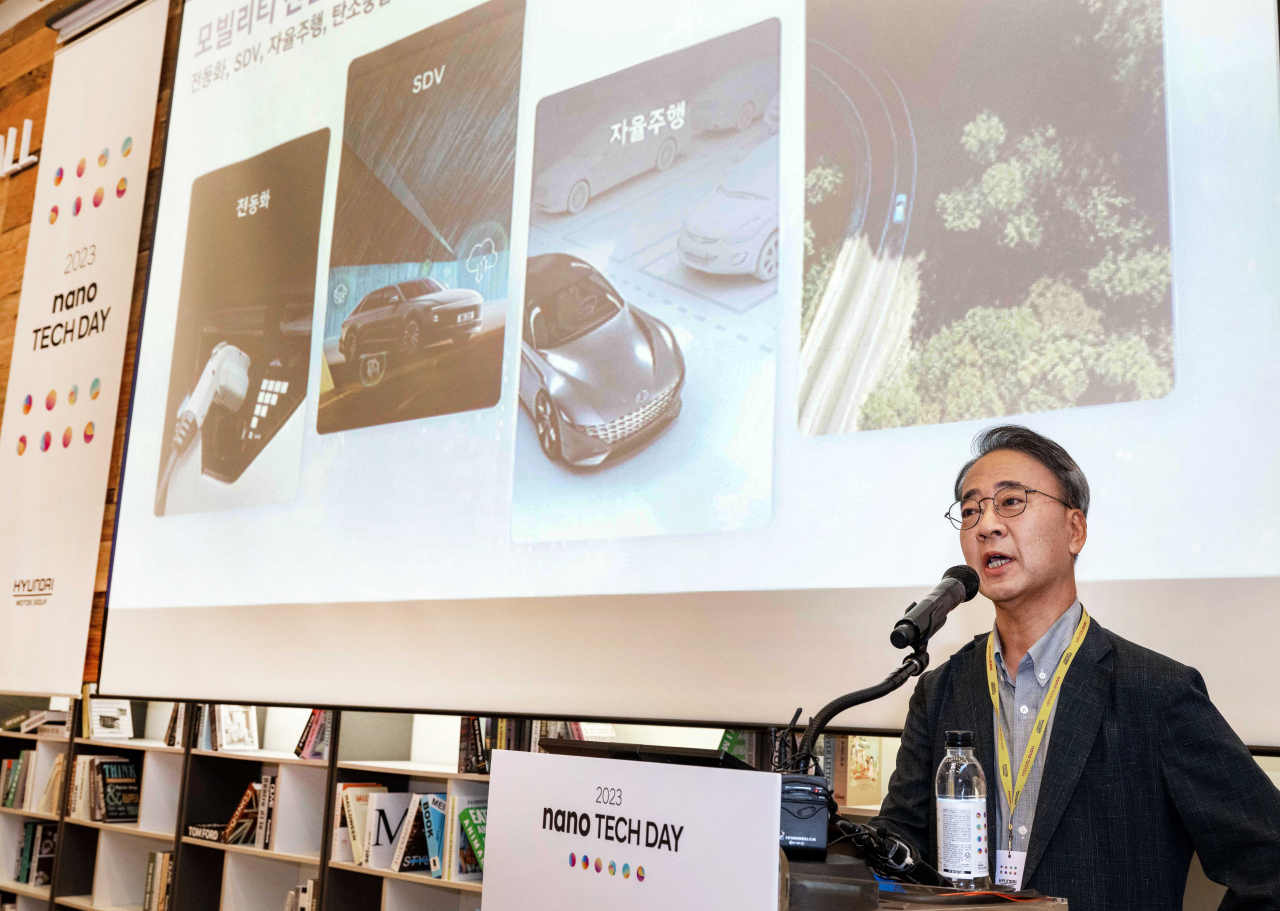
Hyundai Motor Group said Thursday it has developed six kinds of nanotechnologies that will be key drivers of growth in future mobility, ranging from autonomous driving cars to software defined vehicles.
Nanotechnology creates new materials by synthesizing or fabricate arrays of materials that are 1 billionth of a meter in width.
“Only when we secure top level materials technology in mobility can we improve the performance and durability of car parts and vehicles which will offer a competitive edge in the fast-evolving future mobility market,” said Lee Jong-soo, vice president of the institute of advanced technology development at Hyundai Motor Group, during a press conference in Seoul.
The first nanotechnology material presented by the company was self-healing polymer coating, which removes scratches or water from cameras and lidar sensors on self-driving cars.
Based on multiple sets of self-healing mechanisms, unlike a one-off chemical reaction, it can constantly help the car to restore its detecting device, spotting obstacles or pedestrians on roads more accurately, according to Yeo In-hong, a researcher at institute of advanced technology development at Hyundai Motor Group.
The technology enables the restoration process in two hours under ambient temperatures. The process takes a day during freezing temperatures of under minus 10 degrees Celsius, because the chemical reaction tends to slow down in cold temperatures. The technology is expected to be applied to mass-produced cars between 2025 to 2026.
Secondly, oil capsule polymer coating technology -- a spinoff from the self-healing nanotechnology -- slows down the friction and wearing down of car parts. Hyundai claims this technology to be more than 50 percent effective compared to other companies' products.
By this year, the carmaker plans to apply the oil capsule coating to Hyundai and its smaller affiliate Kia’s car chassis -- in particular, the drive shaft -- to reduce the impact of the operating devices on the car.
The third nanotechnology presented was the solar cell, a key energy source that can reduce carbon emissions. Solar cells will be used via larger windows to power up purpose-built vehicles, eco-friendly cars with a wide range of customizations to cater to diverse lifestyles.
Unlike existing solar cells which use silicon, the Hyundai-made solar cells are transparent, using naturally occuring perovskite composed of calcium titanium oxide mineral which absorbs 10 times more solar energy.
The carmaker’s fourth nanotechnology is the tandem solar cell, which attaches a perovskite solar cell to a silicon-based solar energy cell. Tandem solar cells are reported to have higher cell efficiency than silicon cells and even perovskite-based ones.
Applying the cells to EVs roofs, hood and doors will enable 30 percent solar cell efficiency. For instance, it can generate 30 watts of electric energy output after absorbing 100 W of solar energy, the company said. It can also add 20 to 40 kilometers of driving range.
As for nanotechnologies aimed to improve the driving experience, Hyundai touted its seat pressure sensor using a carbon nanotube, known for its high level of durability and elasticity. It reduces power consumption by up to 50 percent and saves 140 W of energy for EVs by transferring heat to the contact surface of a car seat.
The sensor even analyzes respiratory rhythm and heart rate, showing huge potential in the health care market, the company said.
Lastly, Hyundai’s transparent radiative cooling film will be applied to cars’ windows to cool down cars while reducing carbon emissions. A car with radiative cooling film windows decreased the inside temperature by 6.89 C compared to those with low-emissivity films.
Hyundai and its affiliate firm Kia have conducted materials research since the 1970s. Starting from the late 1990s, the companies have set out a wide range of research projects in advanced materials.




















